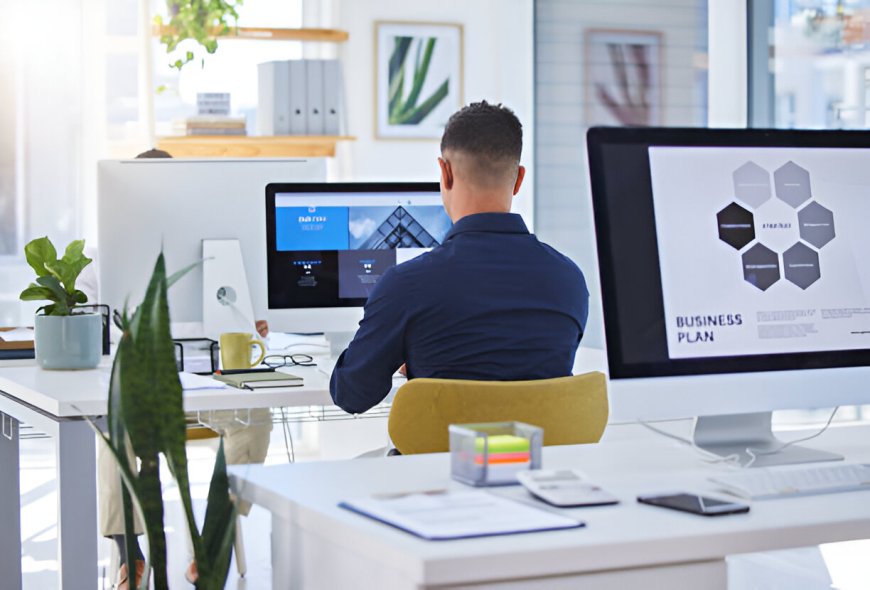The Evolution of Web Design: Trends That Rule in 2025

Web design has come a long way from static HTML pages and flashy intros. In 2025, the web is more interactive, immersive, and human-centric than ever before. It’s not just about how a website looks — it’s about how it feels, performs, and communicates.
So what’s shaping the digital canvas this year? Here’s a look at the web design trends that are redefining the online experience in 2025.
1. Immersive 3D and Motion Experiences
Thanks to powerful browsers and faster internet speeds, 3D elements are no longer limited to gaming websites. In 2025, they’re everywhere — from landing pages to eCommerce product displays.
-
Subtle 3D illustrations create depth and engagement
-
Motion effects respond to user actions for a dynamic feel
-
Parallax scrolling and animated transitions guide the eye through storytelling
These elements not only boost visual appeal but also enhance user engagement and time on site.
2. AI-Personalized Interfaces
AI isn’t just behind the scenes anymore. It’s at the front of web design, delivering hyper-personalized experiences in real time.
-
Content adapts based on user behavior or location
-
Smart chatbots integrate seamlessly into UI
-
AI-generated product recommendations and dynamic layouts
Sites now respond to individual users, creating more relevant and intuitive journeys that feel tailor-made.
3. Dark Mode as the Default
Dark mode has evolved from an option to a default aesthetic in 2025. It’s stylish, easier on the eyes, and energy-efficient — especially for OLED screens.
-
Minimalist UI paired with high-contrast typography
-
Accent colors (neon, pastel, or bold) for key elements
-
Smooth toggles that let users switch between light and dark themes
Designers are creating entire brand palettes built to shine in both modes.
4. Voice-Activated Navigation
With the rise of voice search and smart assistants, websites are now voice-friendly.
-
Users can navigate, search, and interact using spoken commands
-
Accessibility is enhanced for users with disabilities
-
Voice UX design (VUX) is a new must-have skill for modern teams
Expect voice integration to become standard, especially in mobile and eCommerce platforms.
5. Minimalist Neo-Brutalism
The bold, raw aesthetic of neo-brutalism is gaining traction, especially among tech startups and portfolio sites.
-
Bold typography, flat colors, and grid-based layouts
-
Minimalist elements with high visual contrast
-
Focus on honesty and usability over decoration
In 2025, brutalism is no longer just edgy — it's carefully refined for clarity and performance.
6. Sustainable Design Practices
As environmental awareness grows, digital sustainability is becoming a web design priority.
-
Lighter websites that load faster and consume less energy
-
Efficient code, optimized images, and reduced server calls
-
“Green” hosting solutions and carbon-conscious design audits
Designers now factor in the ecological footprint of digital experiences — and users are paying attention.
7. Accessibility as a Design Default
Accessibility is no longer a checkbox; it’s a core design principle. In 2025, inclusive design is baked into every step of the process.
-
High-contrast color schemes and scalable typography
-
Keyboard navigation and screen reader compatibility
-
Animated elements with user-control settings
Websites that prioritize inclusivity not only reach more users but also demonstrate social responsibility.
8. Micro-Interactions for Micro-Delight
Small touches, big impact — micro-interactions are the secret sauce of delightful UX.
-
Button animations, hover states, subtle haptic feedback
-
Form validation cues and real-time feedback
-
Animated loaders that keep users engaged during waits
These small movements keep interfaces alive and emotionally resonant.
9. No-Code Design Tools Rising
The no-code revolution continues to empower designers, marketers, and entrepreneurs to build beautiful websites without touching a single line of code.
-
Tools like Webflow, Framer, and Editor X are industry staples
-
Drag-and-drop functionality with pixel-perfect precision
-
Greater design freedom, faster prototyping, and easier hand-off
No-code doesn’t mean no skill — it means more people can create with fewer barriers.
10. Storytelling with Scroll-Triggered Animations
Scroll-based storytelling is at its peak in 2025. Instead of flat, linear navigation, sites guide users through narratives using:
-
Horizontal and vertical scrolling effects
-
Pinning sections to emphasize key points
-
Sequential animations that unfold as you move down the page
It’s not just browsing — it’s experiencing a brand’s story in motion.
Final Thoughts
Web design in 2025 is a harmonious blend of art, science, and empathy. It’s driven by performance, personalized experiences, inclusive access, and a commitment to sustainability. Whether you’re designing for a startup or a global brand, the key is to keep users at the heart of every decision.
The future of web design isn’t just beautiful — it’s smart, human, and purpose-driven.







